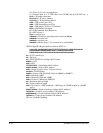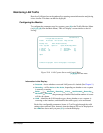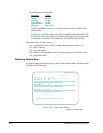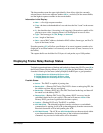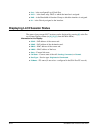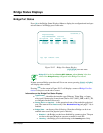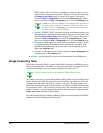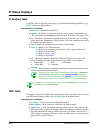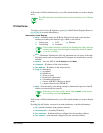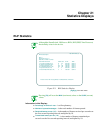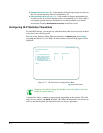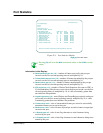
20-24 SmartSwitch 1800 4.0 User Guide, Rev 01
BPDU frames will be received or transmitted, to allow the port to get its
status into the spanning tree algorithm. The port will leave this state when
the
Bridge Forward Delay
timer (see page 16-4) expires. If the port is
selected as
Root
or
Designated
port, it will enter
Forwarding
state. If the
port is not selected as
Root
or
Designated
port, it will enter
Blocking
state.
A
Root
port is the one selected by the spanning tree algorithm as
the port used to reach the root bridge (which is the least-cost
bridge in a link). A
Designated
port is the port that connects to
the least-cost path to the root bridge.
◆
Learning
– BPDUs ("Hello" messages) are being sent between bridges, and
the spanning tree algorithm is being updated. The port will leave this state
when the
Bridge Forward Delay
timer (see page 16-4) expires. If the port is
selected as
Root
or
Designated
port, it will enter
Forwarding
state. If the
port is not selected as
Root
or
Designated
port, it will enter
Blocking
state.
◆
Forwarding
– the Bridge port is participating in bridging of frames, as well
as ongoing learning and updating of the spanning tree algorithm. If the
algorithm redesignates the port as non-root or non-designated, the port
might enter
Blocking
state.
◆
Blocking
– the Bridge port has not been selected as
Root
or
Designated
, and
is transitioning to the
Listening
state.
●
Rcv/Xmit
– are the cumulative bytes received/transmitted on the Bridge port.
Bridge Forwarding Table
The Bridge Forwarding Table is used to match MAC addresses with Bridge ports on
which to forward frames. If an address is not found in the table, the frame will be for-
warded out all Bridge ports except those configured for native LLC-2.
All MAC addresses are in non-canonical (Token Ring) format.
As a frame is received, its source and destination MAC addresses will be added (if not
already there) to the table. (If received from a Token Ring, the addresses will be bit-
swapped [described under "Host MAC Address" on page 9-22] when added to the
table.) The SmartSwitch 1800 software contains a set of reserved MAC addresses that
are considered "static," and will always be in the table. The remaining entries are con-
sidered "dynamic," and will remain in the table for the time period configured as the
Bridge Aging Timer
in Bridge Node Defaults.
Press
[B]
at the Bridge Status Displays Menu to display a forwarding table for all MAC
addresses received on Bridge ports in the node.



